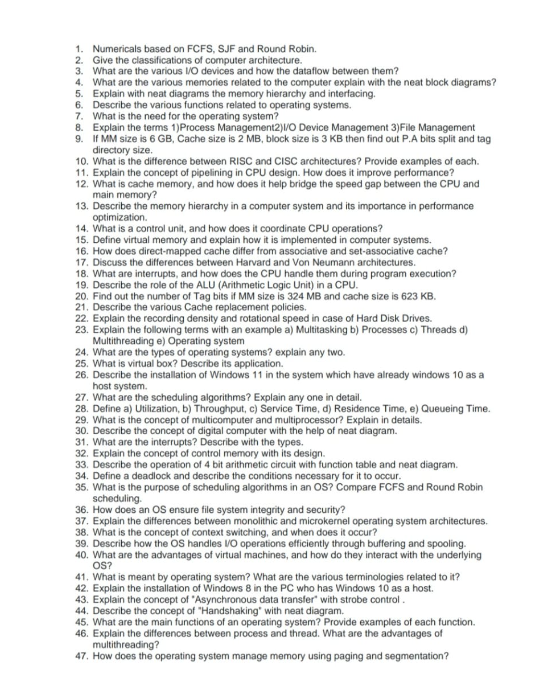How does the operating system manage memory using paging and segmentation?

Understand the Problem
The question contains various inquiries related to computer architecture, operating systems, and CPU functions. It seeks explanations and comparisons of different computer systems concepts and how they function.
Answer
Paging uses fixed-size pages to reduce fragmentation; segmentation uses variable-size segments for logical memory units.
Paging divides memory into fixed-size blocks called pages, which simplifies management and eliminates external fragmentation. Segmentation divides memory into variable-sized segments that represent logical units like functions or arrays. Combining both can enhance memory efficiency and flexibility.
Answer for screen readers
Paging divides memory into fixed-size blocks called pages, which simplifies management and eliminates external fragmentation. Segmentation divides memory into variable-sized segments that represent logical units like functions or arrays. Combining both can enhance memory efficiency and flexibility.
More Information
Paging helps manage memory efficiently by fixed-size allocation, suited for programs with uniform memory access patterns. Segmentation caters to programs needing logically grouped memory regions, such as code and data segments.
Tips
A common mistake is confusing the fixed-size nature of pages in paging with the variable-size nature of segments in segmentation.
Sources
- Difference Between Paging and Segmentation - GeeksforGeeks - geeksforgeeks.org
- Paging vs Segmentation: Core Differences Explained | ESF - enterprisestorageforum.com
- Difference Between Paging And Segmentation Explained! - Unstop - unstop.com
AI-generated content may contain errors. Please verify critical information